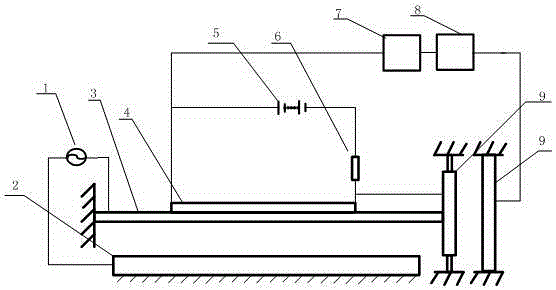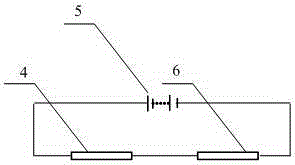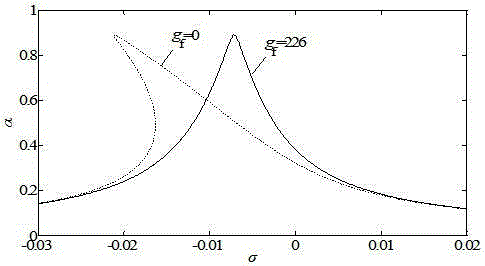Electrostatic control device for resonator nanometer beam
A static control and control device technology, applied in the direction of electrical components, impedance networks, etc., can solve problems such as resonance point offset, affecting the stability of the matching electronic equipment with the best frequency, and structural vibration instability, etc., to achieve small device size Effect
- Summary
- Abstract
- Description
- Claims
- Application Information
AI Technical Summary
Problems solved by technology
Method used
Image
Examples
Embodiment Construction
[0019] Below in conjunction with accompanying drawing and embodiment the present invention is further described:
[0020] Such as figure 1 and figure 2 As shown, a resonator nanobeam electrostatic control device consists of three parts: a driving device, a control device and a signal extraction device. The driving device includes a signal source 1, a driving electrode 2 and a nanobeam 3, wherein one end of the signal source 1 is connected to a driving Electrode 2, the other end is connected to nano-beam 3, and drive electrode 2 is located below the nano-beam, and parallel to the nano-beam, the signal source is connected in series with the drive electrode and the nano-beam; the signal source generates an AC voltage signal of , where, V is the drive voltage, V 0 is the driving voltage amplitude, ω is the driving signal frequency, t is time, the simple harmonic vibration generated by the nanobeam is , where y represents the vibration displacement, y 0 is the vibrat...
PUM
 Login to View More
Login to View More Abstract
Description
Claims
Application Information
 Login to View More
Login to View More - R&D
- Intellectual Property
- Life Sciences
- Materials
- Tech Scout
- Unparalleled Data Quality
- Higher Quality Content
- 60% Fewer Hallucinations
Browse by: Latest US Patents, China's latest patents, Technical Efficacy Thesaurus, Application Domain, Technology Topic, Popular Technical Reports.
© 2025 PatSnap. All rights reserved.Legal|Privacy policy|Modern Slavery Act Transparency Statement|Sitemap|About US| Contact US: help@patsnap.com



